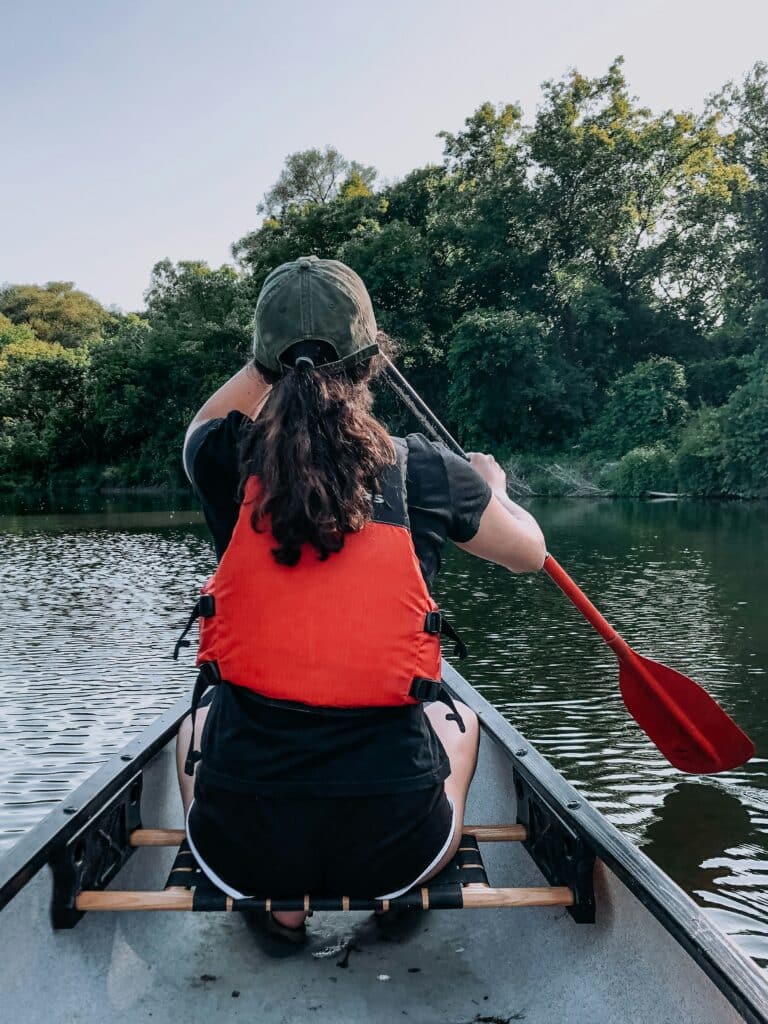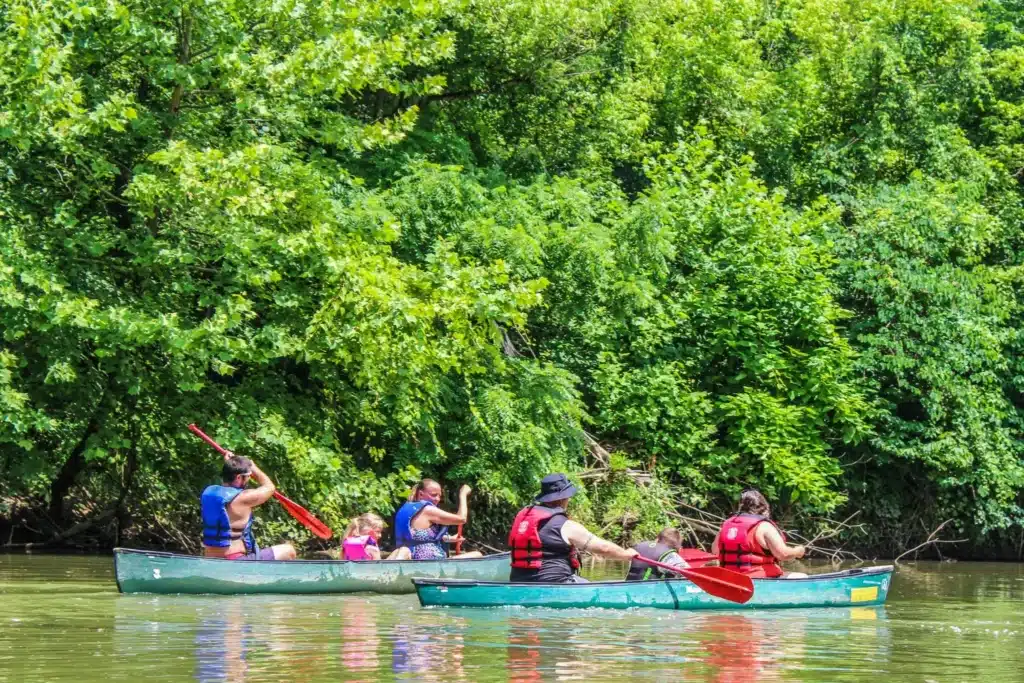
Understanding River Safety Fundamentals
Rivers are ever-changing environments what’s calm one hour can be treacherous the next. Embracing basic river safety principles helps you anticipate hazards and respond effectively.
- Assessing Flow Rates:
- Gauge Readings: Check USGS or local river gauge data for current water levels.
- Visual Inspection: Look for foam lines or “ripples” that indicate faster-moving currents.
- Seasonal Variations: Spring melt or heavy rains can dramatically speed up flows.
- Recognizing River Terrain:
- Pools & Runs: Deep, slow sections (pools) alternate with faster, shallower sections (runs). Knowing the difference informs your paddling strategy.
- Shelves & Drop-offs: Underwater ledges can create hydraulics—powerful recirculating currents that can trap boats.
- Emergency Planning:
- Float Plan: Share your route, estimated times, and emergency contacts with someone onshore.
- Checkpoints: Identify safe pull-out zones and put-in/portage spots before you depart.
- Gauge Readings: Check USGS or local river gauge data for current water levels.
- Visual Inspection: Look for foam lines or “ripples” that indicate faster-moving currents.
- Seasonal Variations: Spring melt or heavy rains can dramatically speed up flows.
- Pools & Runs: Deep, slow sections (pools) alternate with faster, shallower sections (runs). Knowing the difference informs your paddling strategy.
- Shelves & Drop-offs: Underwater ledges can create hydraulics—powerful recirculating currents that can trap boats.
- Float Plan: Share your route, estimated times, and emergency contacts with someone onshore.
- Checkpoints: Identify safe pull-out zones and put-in/portage spots before you depart.
By adopting these paddling tips, you’ll navigate river features with greater confidence and control.
Choosing the Right Personal Safety Gear
No matter your vessel, canoe, kayak, or raft, the right equipment is non-negotiable for safe river travel.
- Personal Flotation Device (PFD):
- Must be US Coast Guard–approved and properly fitted.
- Choose a model rated for your weight and activity type (whitewater PFDs differ from flatwater designs).
- Protective Helmets:
- Required in Class II–IV rapids.
- Look for helmets certified by ASTM or CE standards.
- Appropriate Footwear:
- Neoprene booties or strap-on sandals protect against sharp rocks and cold water.
- Secure closures prevent loss if you swim.
- Essential Accessories:
- Whistle or Signal Mirror: Fastest way to alert rescuers.
- Dry Bag: Waterproof storage for snacks, spare clothes, phone (in watertight case), and first-aid kit.
- Throw Bag: A lightweight rescue rope, crucial during swift-water rescues.
- Must be US Coast Guard–approved and properly fitted.
- Choose a model rated for your weight and activity type (whitewater PFDs differ from flatwater designs).
- Required in Class II–IV rapids.
- Look for helmets certified by ASTM or CE standards.
- Neoprene booties or strap-on sandals protect against sharp rocks and cold water.
- Secure closures prevent loss if you swim.
- Whistle or Signal Mirror: Fastest way to alert rescuers.
- Dry Bag: Waterproof storage for snacks, spare clothes, phone (in watertight case), and first-aid kit.
- Throw Bag: A lightweight rescue rope, crucial during swift-water rescues.
Investing in well-maintained gear reduces risk and enhances comfort throughout your journey.
Mastering Paddling Techniques and Reading River Currents
Skillful paddling and current interpretation separate apprehensive floats from smooth runs.
Paddling Fundamentals
- Forward Stroke: Engage your torso, not just arms, for efficient propulsion.
- Reverse Stroke: Slow or back out of unwanted currents—key when approaching obstacles.
- Draw Stroke: Move the boat sideways to precisely position against banks or around hazards.
Advanced Boat Handling
- Edging: Tilt the boat slightly to use the hull’s shape for turning, especially useful in kayaks.
- Ferrying: Angle your boat upstream to cross swiftly moving water without being swept downstream.
- Boof Stroke: For kayakers, a forceful forward stroke before drops helps lift the bow and land flat.
Reading the River
- Eddies: Calm, circular zones behind obstacles, ideal rest spots or safe navigation points.
- Strainers & Sweepers: Branches or debris that let water through but block boats always skirt wide.
- Hydraulics (“Holes”): If you see water pouring back on itself, that’s a hydraulic avoid or scout from shore.
Practicing these whitewater safety methods under professional guidance, find our local office at Hocking Hills Canoe Livery Services, will build instincts that kick in when it matters most.
Preparing for Canoeing Adventures: Pre-Trip Planning

A little foresight goes a long way in ensuring smooth sails or should we say paddles?
- Route Mapping: Consult topographic maps and trip reports for rapids classifications (Class I–VI).
- Portage Logistics: Identify carry-around points for low-head dams or unnavigable stretches.
- Group Dynamics: Assign trip leader and sweep (last boater) roles to maintain group cohesion.
- Provisioning: Pack enough water (at least 1 liter per hour), electrolyte mixes, and calorie-dense snacks like trail mix or energy bars.
- Sun & Bug Defense: Sunscreen (SPF 30+), polarized sunglasses, and insect repellent shield you from elements.
Thorough planning transforms potential pitfalls into manageable checkpoints.
Essential Kayaking Safety Measures for All Skill Levels
Kayaking’s versatility, from tranquil promenades to adrenaline-laced rapids, demands adaptable safety practices.
- Wet Exit & Self-Rescue:
- Practice rolling out of your kayak in shallow, calm water until the motion becomes second nature.
- Eskimo Roll (Optional):
- Advanced paddlers can learn this technique to right themselves without exiting.
- Buddy System:
- Keep visual contact; agree on a recall signal (three paddle pumps) in case of separation.
- Communication Protocols:
- Predefine hand signals for “stop,” “paddle forward,” and “help.”
- Practice rolling out of your kayak in shallow, calm water until the motion becomes second nature.
- Advanced paddlers can learn this technique to right themselves without exiting.
- Keep visual contact; agree on a recall signal (three paddle pumps) in case of separation.
- Predefine hand signals for “stop,” “paddle forward,” and “help.”
Whether you’re negotiating a swift riffle or enjoying a scenic float, these paddling tips help you stay balanced, both literally and figuratively.
Rafting Responsibly: Coordinating Your Team
Group paddling in a raft amplifies both fun and safety responsibilities.
- Crew Assignments:
- Front paddlers set pace; stern paddlers steer and command.
- Synchronized Commands:
- Use clear calls “Forward Paddle,” “Back Paddle,” “Hold Fast” so everyone moves in unison.
- Proper Seating & Weight Distribution:
- Have lighter paddlers sit upstream to maintain stability in rapids.
- Rescue Readiness:
- Keep a positioned throw bag and a spare paddle accessible at all times.
- Front paddlers set pace; stern paddlers steer and command.
- Use clear calls “Forward Paddle,” “Back Paddle,” “Hold Fast” so everyone moves in unison.
- Have lighter paddlers sit upstream to maintain stability in rapids.
- Keep a positioned throw bag and a spare paddle accessible at all times.
Teamwork makes the dream work especially when you’re hurtling toward a Class III rapid.
Recognizing and Responding to Common River Hazards
Staying safe means knowing what to look for and how to react.
- Strainers & Sweepers:
- Never attempt to paddle under low-hanging branches; they trap boats and people.
- Hydraulics & Holes:
- If your bow dips and you start spinning, lean forward and paddle hard to escape downstream.
- Cold-Water Immersion:
- Sudden entry into dice-cold water triggers involuntary breath wear PFDs at all times to stay afloat.
- Sudden Drop-Offs:
- Slow before any visible ledge; inspect unknown drops from shore if possible.
- Never attempt to paddle under low-hanging branches; they trap boats and people.
- If your bow dips and you start spinning, lean forward and paddle hard to escape downstream.
- Sudden entry into dice-cold water triggers involuntary breath wear PFDs at all times to stay afloat.
- Slow before any visible ledge; inspect unknown drops from shore if possible.
A calm mind and practiced drills keep you from turning hazards into emergencies.
Environmental Responsibility on the River

Protecting waterways ensures adventures for generations to come.
- Leave No Trace:
- Pack out all trash including biodegradable items like orange peels.
- Stay on Designated Channels:
- Avoid trampling sensitive shoreline vegetation and disturbing wildlife habitats.
- Respect Wildlife:
- Observe animals from a distance; loud noises can stress nesting birds or riverbank mammals.
- Pack out all trash including biodegradable items like orange peels.
- Avoid trampling sensitive shoreline vegetation and disturbing wildlife habitats.
- Observe animals from a distance; loud noises can stress nesting birds or riverbank mammals.
Responsible paddlers not only enjoy nature—they safeguard it.
First Aid Basics for River Trips
A well-equipped first-aid kit and basic skills can make a critical difference.
- Kit Essentials:
- Adhesive bandages, sterile gauze, antiseptic wipes, splint material, and a CPR mask.
- Common Treatments:
- Sprains & Strains: Rest, ice (if available), compression, and elevation.
- Cuts & Abrasions: Clean thoroughly, apply antibiotic ointment, and cover with a sterile dressing.
- Emergency Communication:
- Carry a fully charged cell phone in a waterproof case or a VHF radio if coverage is spotty.
- CPR/First-Aid Certification:
- Consider taking a course through the Red Cross or a local EMS provider.
- Adhesive bandages, sterile gauze, antiseptic wipes, splint material, and a CPR mask.
- Sprains & Strains: Rest, ice (if available), compression, and elevation.
- Cuts & Abrasions: Clean thoroughly, apply antibiotic ointment, and cover with a sterile dressing.
- Carry a fully charged cell phone in a waterproof case or a VHF radio if coverage is spotty.
- Consider taking a course through the Red Cross or a local EMS provider.
Prepared paddlers handle minor injuries on the spot—and know when to seek professional help.
Leveraging Professional Guidance and Local Expertise
Our seasoned guides at Hocking Hills Canoe Livery have explored every mile of the Hocking River network. Here’s why tapping into local knowledge matters:
- Up-to-Date Flow Reports: We track water levels and rapids difficulty daily.
- Customized Trip Plans: From leisurely floats to expert-level runs, we tailor outings to your comfort and skill.
- Equipment Advice: Whether you need a stable canoe for family fun or a nimble kayak for roller-coaster rapids, we’ll recommend the perfect rig.
Ready to benefit from our deep river know-how? Reach out to us at 740-385-0523, or learn about our team on our About Us page.
Conclusion & Your Next Steps on the Water
Practicing sound river safety transforms every canoeing, kayaking, and rafting trip into a worry-free adventure. By combining careful planning, proper gear, solid techniques, and respect for nature, you unlock the full thrill of river exploration.
Have questions or ready to book?
Reach out to us at 740-385-0523. We’re conveniently located in Logan, Ohio, find our local office on our services page and eager to help you embark on your next safe, memorable river journey.
Additional Resources:
- Services & Routes: Plan your adventure at Hocking Hills Canoe Livery Services.
- Frequently Asked Questions: Get quick tips on gear and logistics at our FAQ.
- Meet Our Guides: Discover the experts behind your trip on About Us.
Paddle smart, stay safe, and let the river carry your cares away!

